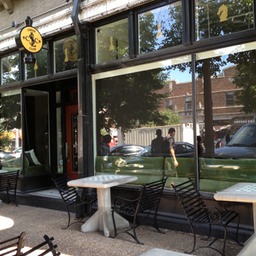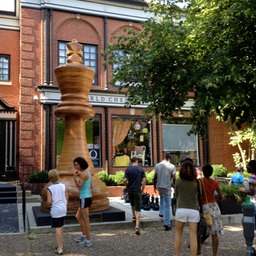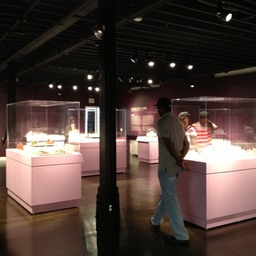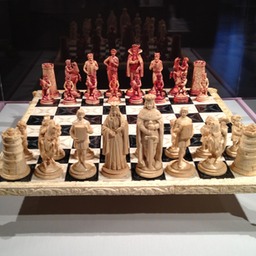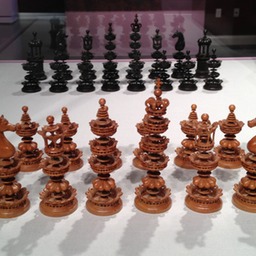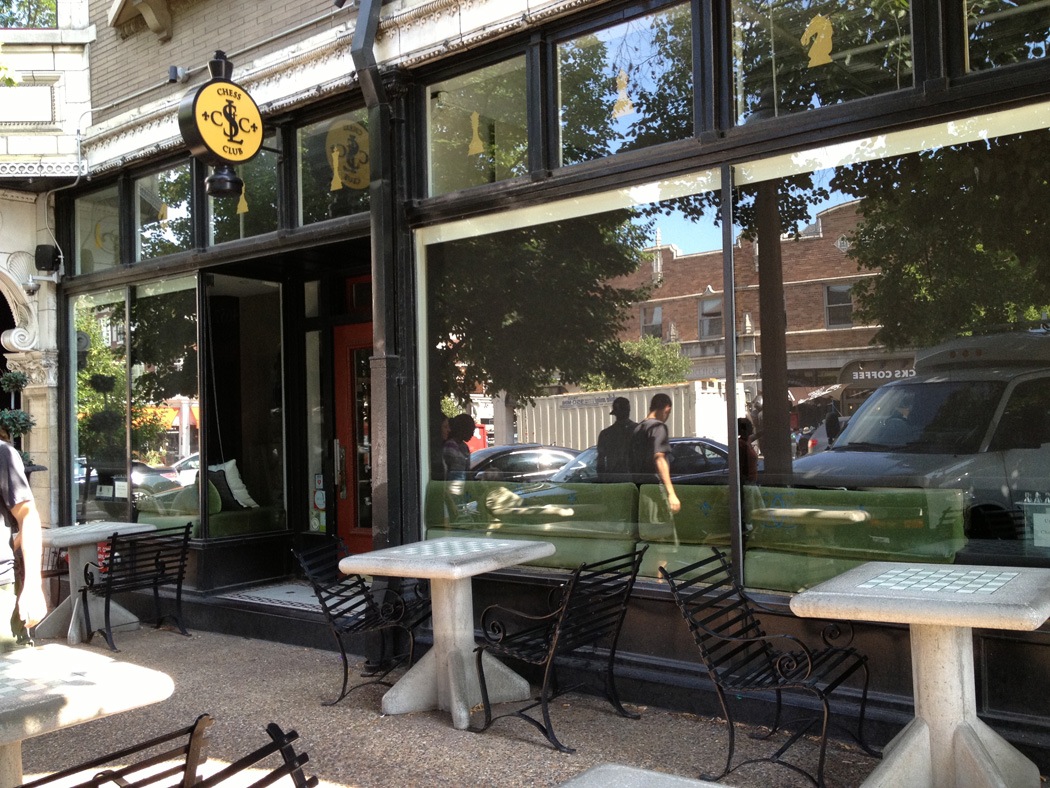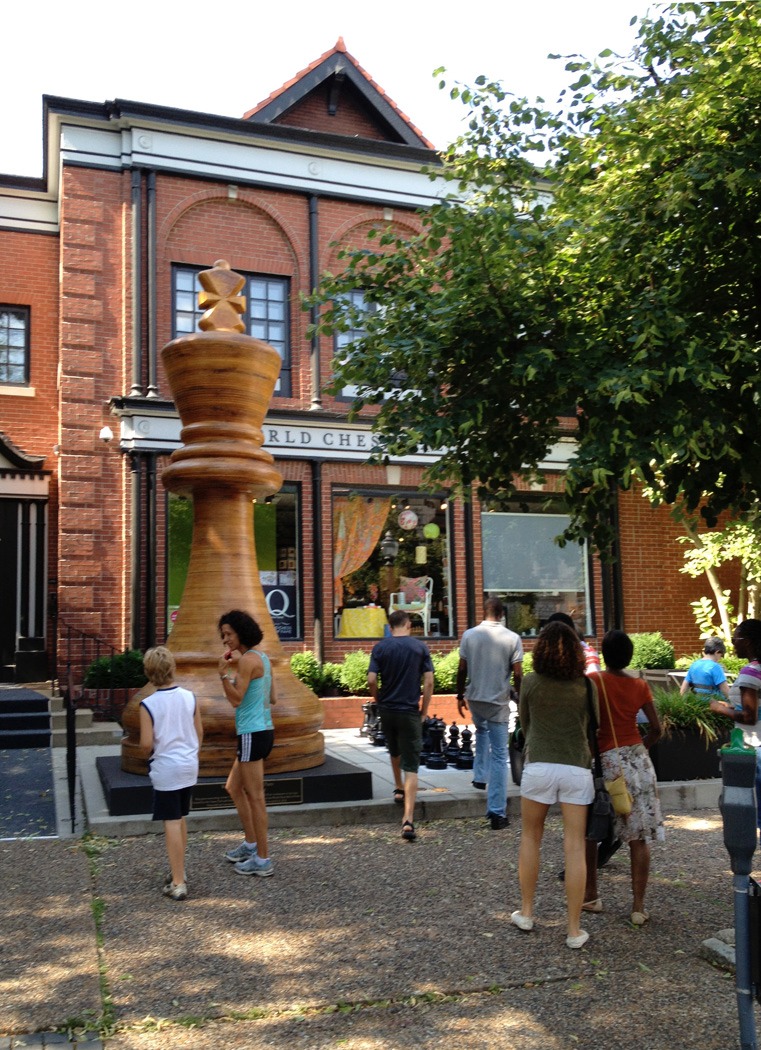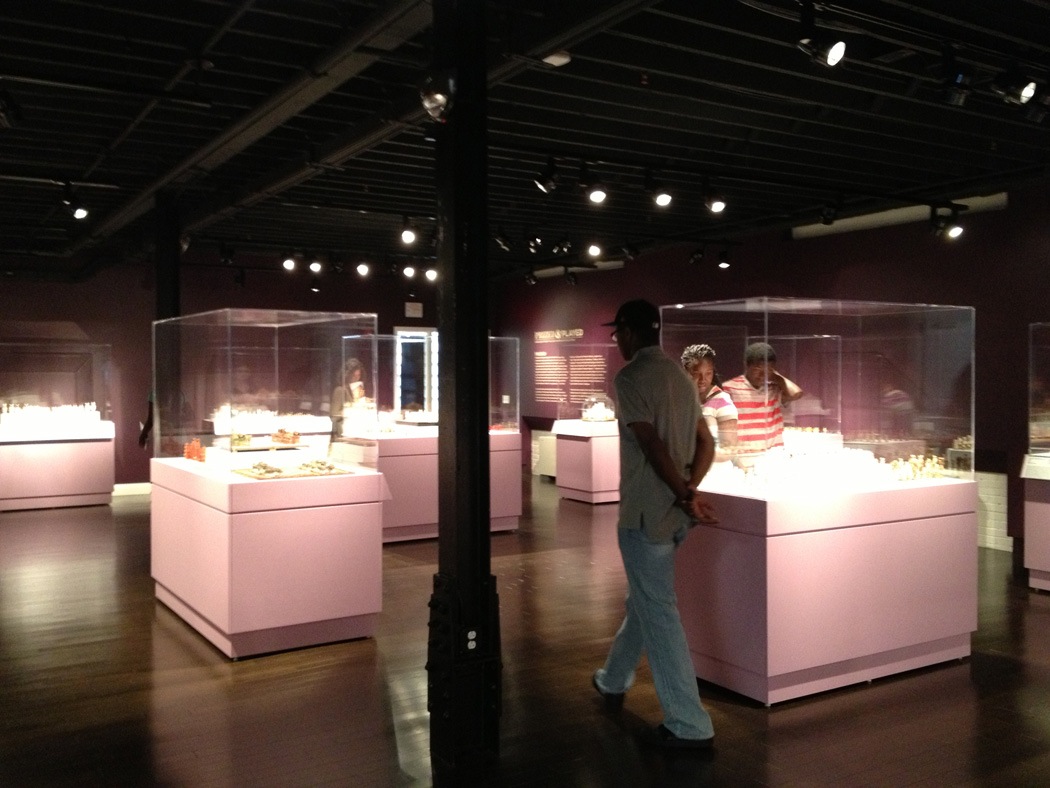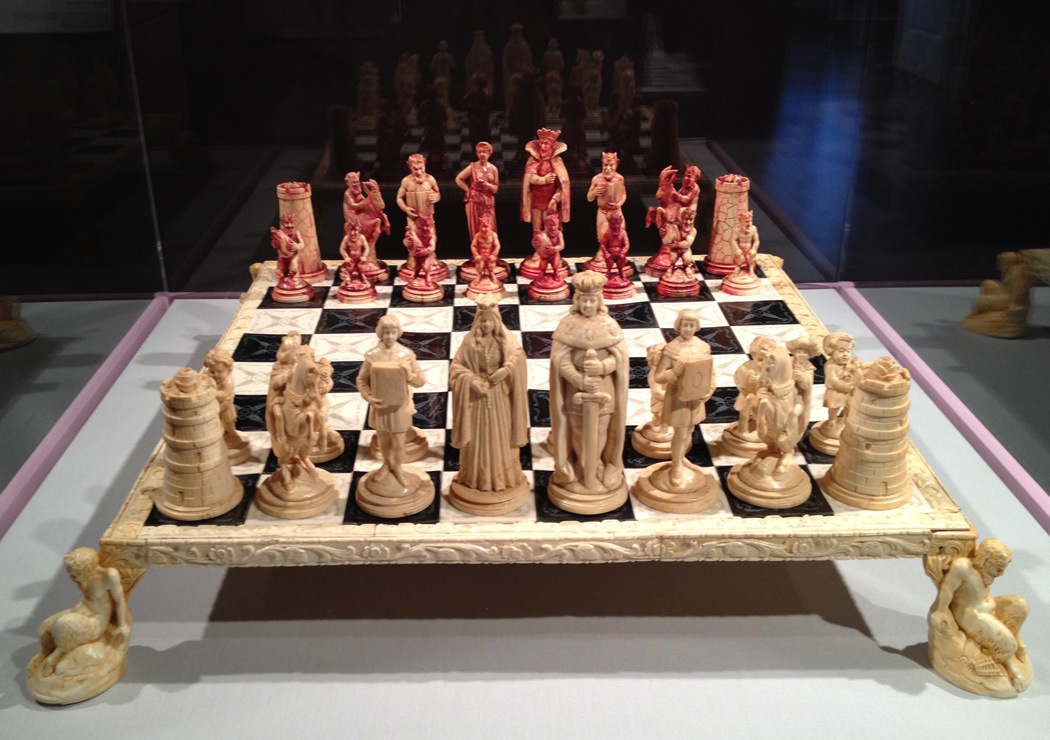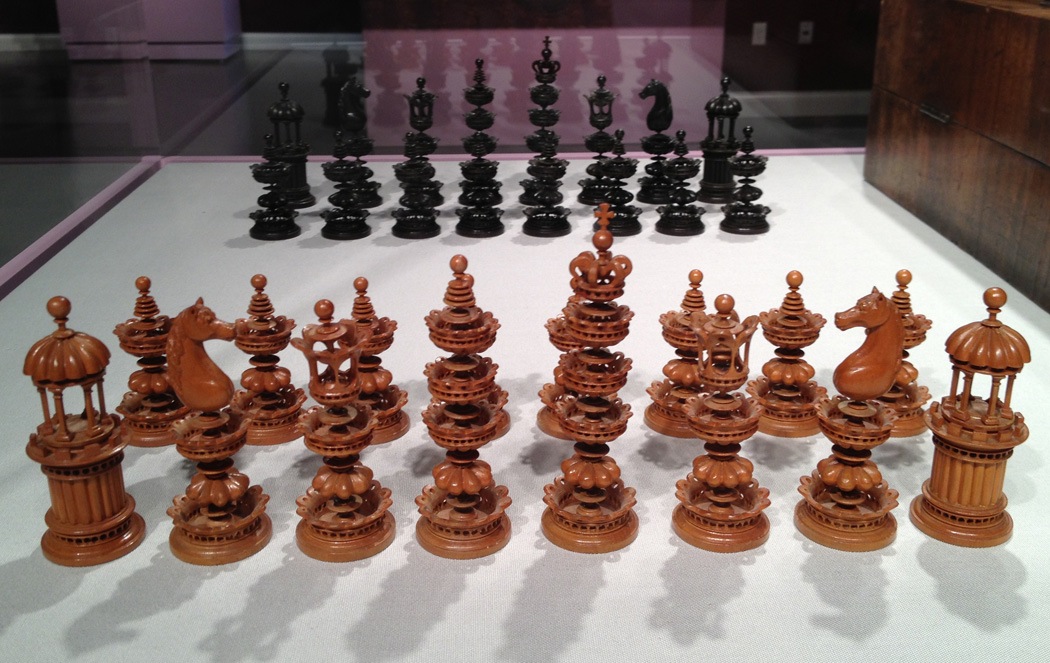Fabricating plants for the Wetlands and Waterways diorama
The fabrication of plants plays a major role in making most dioramas look as realistic as possible. Sometimes you can find good representations of plants through artificial plant companies. But most of the time you will have to make modifications to some part of the plant depending on the particular requirements of your diorama. In other cases where no artificial specimen is available, you will have to make the plant from scratch. Although we are employing several techniques for the diorama in the Cahokia Mounds exhibit, “Wetlands and Waterways: The Key to Cahokia”, we are having some success with a method that diorama artist, Gary Hoyle, mentioned in his blog. He suggested making plant leaves out of paper. So, we start by collecting specimens from nature. We then scan multiple leaf types from each specimen. I scan the top side and then make a copy and flip and lighten the image for the underside. I apply positional mounting adhesive (PMA) to one side. Then before I line up the other side, I insert a wire down the middle of each leaf to attach to the main stem.
The other problem we had to solve was the issue of aging. Since paper tends to yellow and dye inks tend to fade over time, we’ve had to use paper and inks that are archival quality. Epson makes several lines of printers that use pigment inks which have been tested to last for decades without fading. Epson also makes a line of Fine Art papers that are acid-free and made of 100% cotton. They come in smooth or textured and bright white or natural. We are still experimenting to determine which papers work best for each leaf type. Dioramas will always be labor-inntensive endeavors, but the level of realism and the longevity achieved with this method, makes it a viable option to other plant fabrication techniques.
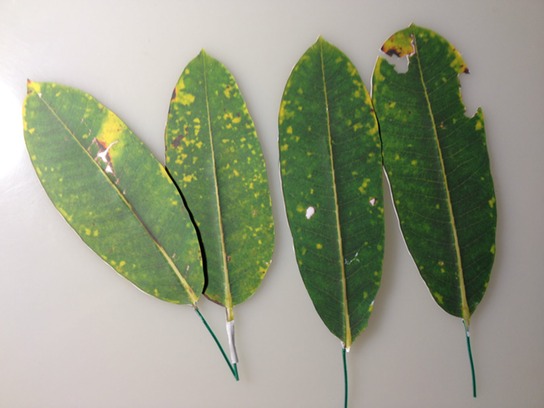
Artificial milkweed Leaves
Exhibit Proposal Form
Where do ideas for new exhibitions come from? One obvious answer is the museum planning team. Normally composed of administrators, designers, educators, and subject specialists (curators), they would be the logical group to generate ideas about how the collections should be interpreted. Ideas for exhibition may also come about in other ways. Growth in the collections or anticipation of future growth, can suggest exhibit topics. New discoveries through research or archaeological excavations may suggest ideas. An individual’s inspiration or even visitor suggestions may be found worth pursuing. In fact, it’s not important where the exhibition ideas come from. Take advantage of any and all inspired ideas no matter how they are generated. The important thing is that museums apply some form of criteria to assess the feasibility of the idea. Many museums use an exhibit proposal form as an initial screening device and as a way to prioritize a number of exhibit ideas. I have developed the following exhibit proposal form based on publications and examples from various museums. The criteria are relevant to most museums and types of exhibitions. Feel free to use it for your institution or rework it for your particular situation.
Exhibit Policy
It’s hard to imagine a museum leader today that does not acknowledge the importance of core documents like a mission statement or a collections policy. But you would be much more likely to find a museum that lacks a formal exhibition policy. Even the American Alliance of Museum’s list of Core Documents does not include an exhibition policy. Considering the amount of resources (time, staff, and money) allocated to producing and hosting exhibitions, this is a glaring omission, especially when you consider that for most visitors, the exhibitions are the only aspect of the museum they ever have contact with.
After viewing a few exhibition policies online, I realize that there is very little standardization. Some museums include information that belongs in other documents (e.g. how to handle objects on loan for exhibits) or is too detailed, obvious, or restrictive to be useful in a general exhibition policy (no loan objects will ever be for sale or a loan will never exceed a certain length of time).
This PDF file covers seven factors to include in an exhibition policy, namely, subject matter, geographic parameters, space factor, priorities, goals, visitors, and function. I hope you find it useful.
Old Pascua Museum and Cultural Center
My graduate school classmate at the University of Arizona, Ernesto Quiroga, invited me to the grand opening on August 2 of the Old Pascua Museum and Cultural Center in Tucson, Arizona. Located in the original Pascua Yaqui (Yoeme) community and built in 1926, the OPMCC also known as the Matus/Meza House, served as the residence of one of Pascua’s earliest settlers. Ernesto’s brother, Guillermo Quiroga, serves as the museum director. He had this to say about the museum, “The Old Pascua Museum is an important step in honoring the elders who had worked and sacrificed so much for us to be able to see things like this become a reality. Now the Old Pascua community will have a place to share their histories and memories with the youth and others that love our culture and traditions.” Guillermo and many others worked hard to create the OPMCC, and the community should be proud of their accomplishments.
Not all Indians, however, share that love of museums, especially given the past record of museums and Indian relations. Even my friend Ernesto, who ran the Indian Studies program at Pima County Community College until his retirement three years ago, had some misgivings. Why, he asked, does a tribe like the Yoeme, with such rich cultural traditions, need a museum? Museums are for those tribes that have lost their traditions, not the Yoeme. His sentiment made me think of a story I read in Roger Welsch’s book, It’s Not the End of the Earth, but You Can See It from Here. Welsch asked an old Lakota medicine man, Fool Bull, if he was passing along his knowledge of plants to young Lakota or if he was writing things down. “No, Roger,” he said, “I’m not writing them down and I’m not teaching them to anyone.” Welsh pleaded with Fool Bull that his knowledge is like a treasure, and if he didn’t do something to preserve what he knows, it will be lost. Fool Bull just laughed and then replied, “If a treasure is lost, it isn’t gone. It’s still there, where it has always been. It just so happens that at the moment no one knows where its place is. The knowledge isn’t lost. We are. The truth never sleeps.” Then he gave an example. “If everyone were to forget for a moment that aspirin cures a headache, it doesn’t mean that aspirin no longer cures headaches. Aspirin would still cure headache if we knew about it but for a moment we don’t know about it– just as it was when we had the willow but didn’t know about the willow.” (Aspirin comes from salicin found in the inner bark of the willow).
Like Guillermo said, the Yoeme elder’s hard work made the museum possible. Maybe the Yoeme still know about aspirin, but the museum is a physical reminder that they will never forget about aspirin. Maybe the Yoeme do not yet have a clear vision of what the museum will become, but it is an important step and another tool for carrying those traditions into the future by whatever means they see fit.
World Chess Hall of Fame
World Chess Hall of Fame
From time to time we will post blogs of museum we have visited. We will try to only report on those not so familiar museums that have a unique quality or which make a particular impression on us.
The World Chess Hall of Fame
While Nora Pat was attending the SHEAR conference in St. Louis the weekend of July 19-21, I tagged along to do some work in our exhibit shop on the Hill and do a little sightseeing. Surfing the web I came across the World Chess Hall of Fame and discovered it was near where we were staying on the Central West Side. So, I planned to be there when they opened the doors at 10AM on Saturday. You might wonder as I did, how the WCHOF ended up in St. Louis. You can find the whole story on their website at worldchesshof.org, but it was a circuitous route through the cities of New York, Washington, D.C., and Miami before it ended up in St. Louis in August 2010. The international reputation of the Chess Club and Scholastic Center, located across the street, largely attributed to the decision. It’s hard to miss the Hall of Fame because of the giant King chess piece sitting between the front doors and the sidewalk. It’s made of laminated wood and stands at 14’7” high.
The WCHOF is housed in an historic (15,900 square foot) three-story former residence. I can’t tell you much about their permanent collection, because it was all in storage to make room for two special exhibits. The WCHOF also states that it offers interpretive programs that provide unique and exciting ways to experience art, history, science, and sport through chess. Not aware of this at the time of my visit, I was surprised to find the works of biomimicry artist, Bill Smith, in the first floor gallery. Although I didn’t see the connection to chess at the time, the catalogue says, “Like Smith’s work, chess is defined by rules, patterns, and interactions. The rules of a game are analogous to the laws of nature. Both games and nature are systems made up of rules within which players, planets, species or individuals must function.” Smith creates sculptures out of very fine wire in organic shapes, like a 7 foot diameter sphere that glowed in the dark. One of his works had to be displayed in the stairway, because it is 3 stories tall. The exhibit practitioner side of me kept wondering how he moves all these fragile pieces without damaging them.
The other exhibit took the entire 2nd and 3rd floors. It was a traveling exhibit, highlights selected from collection of Jon Crumiller, called Prized and Played. The 2nd floor displayed the Prized chess sets intended as objets d’art rather than used in play. Although some of the sets on the 3rd floor appear just as ornamental, they were all intended for use in play. These sets were collected from across Europe and Asia and date mostly from the 19th century. Wealthy patrons commissioned the Prized sets. Since the artists did not have to worry about their utility, they were free to demonstrate their skill in working luxury materials such as ivory, gold, silver, pearls and precious stones. In an Italian Good vs. Evil ivory set, bishops hold copies of Dante’s The Inferno. The ivory board is held up by 4 Pan figures for the legs.
Some of the Played sets on the 3rd floor were used in actual tournaments. One had the silver medallions attached to the box for every award won by the chess team that owned the set. There was also a 4-handed chess set, allowing 4 people to play at once. The docent, a chess player himself, said he had tried it, but victory was too random for his liking. There were some chess books and chess tables. There was a chessboard that had the signatures of all the players from the 1939 World Chess Tournament on the squares of the board. Each display case had informative labels mounted outside the case, and each gallery had a supplemental gallery guide. Prized and Played will be there until September 15th.
The building has been renovated with a new HVAC system. Since I got there at opening time, I heard the staff reporting the temperature and humidity readings for each floor. They also had sophisticated lighting and display cases, and the docents were all informative and engaging. The only problem I noticed was a lot of floor vibration when people walked by. This caused some of the pieces to walk a noticeable distance from their original display location. The good thing is the docents are aware of the problem and monitor the situation. The bad thing is the display cases all have large and heavy Plexiglas vitrines that are not easy to remove. They also have a nice gift shop, although I didn’t have time to explore it closely. Also, coming in October is the exhibit, A Queen Within: Adorned Archetypes, Fashion and Chess. You don’t have to be a chess enthusiast to enjoy this museum. Next time you’re passing through St. Louis, check it out.
Fake Dirt Recipe
First Post
Welcome to Riccio Exhibit Services revised website. Now that I have resigned my teaching position in Eastern Illinois University's Historical Administration Program, I am devoting most of my time to the exhibit firm. Our clients can still expect the highest standards and level of commitment to your projects that RES is noted for. We are fairly new to the blogosphere, so this is a work in progress. I hope to share exhibit issues, tips of the trade, and maybe make connections to the way we approach exhibits, that you may not have considered before. I hope you will join the discussion and share this site with like-minded folks.
Since I get requests for this from my former students at least once or twice a year, I thought I should make one of the first blog entries my "fake dirt" recipe. Several classes have used this recipe for their exhibit project. It is very versatile, and I have even used it on vertical surfaces. And it has obvious benefits over using real dirt in galleries.
FAKE DIRT RECIPE
The recipe should cover an area approximately 4’ X 6’
1 bag of sand (buy wash sand instead of sandbox sand. It’s cheaper and dirtier, but hey, that’s what we’re making)
Instead of sand you can substitute powdered potter’s clay. It depends on what kind of dirt you want to make, sand-like or clay-like. You can also use both in proportion to the kind of dirt you desire.
1-gallon carpenter’s glue
Water
Sawdust
Water-base paint (optional)
Mix up the sand and/or clay and sawdust in a wheelbarrow with a hoe in roughly equal parts. You probably won’t use a whole bag of sand, but just make enough so that when you mix it up, it’s not spilling over the top of the wheelbarrow. Keep adding water and glue in equal parts and mix until the consistency of wet cement, thoroughly wet, but not runny. If you need certain color dirt, you can add paint to change the darkness and/or color. A little paint goes a long way. Just add a little at a time, like a cupful. Remember, the dirt will dry darker, too.
Staple 1-inch mesh chicken wire to the surface where dirt is to be applied. Trowel on enough dirt to cover the wire. It may take 2-3 days to dry, so don’t wait until the last minute before making it. If you didn’t mix enough, just repeat the process. Ideally, you shouldn’t trowel it on in the gallery because water can seep out. It will be heavy to move when dry, but better safe than sorry.
